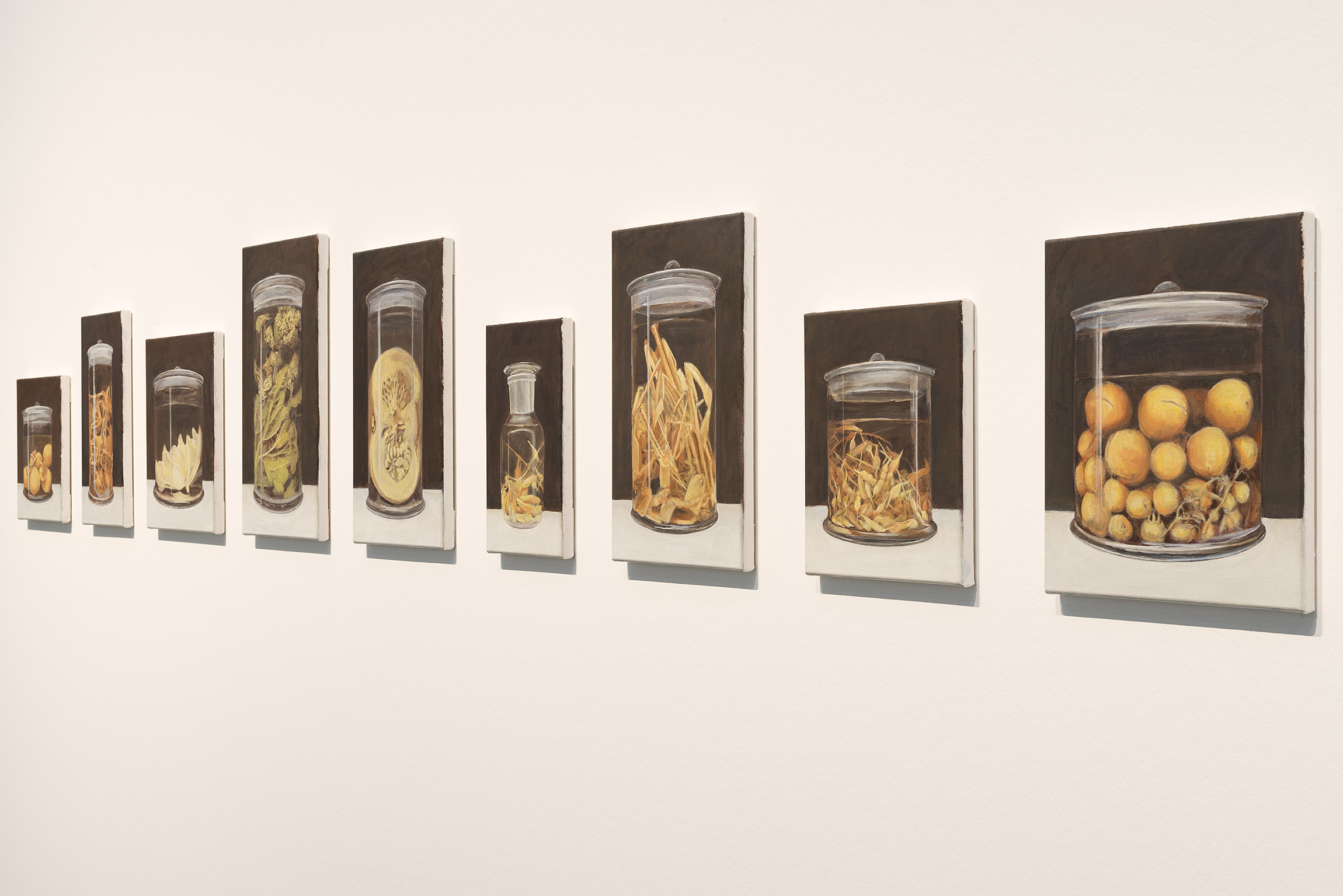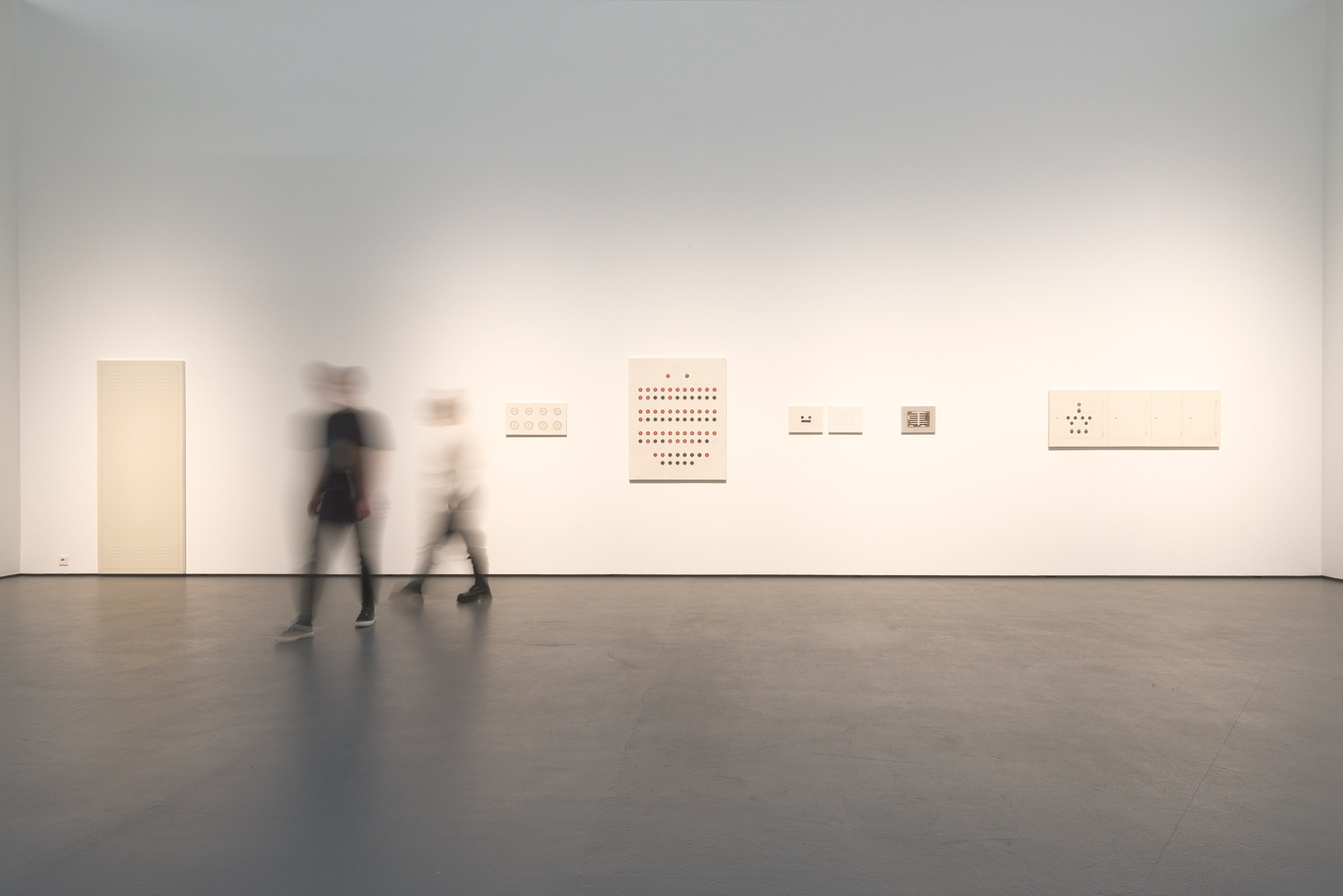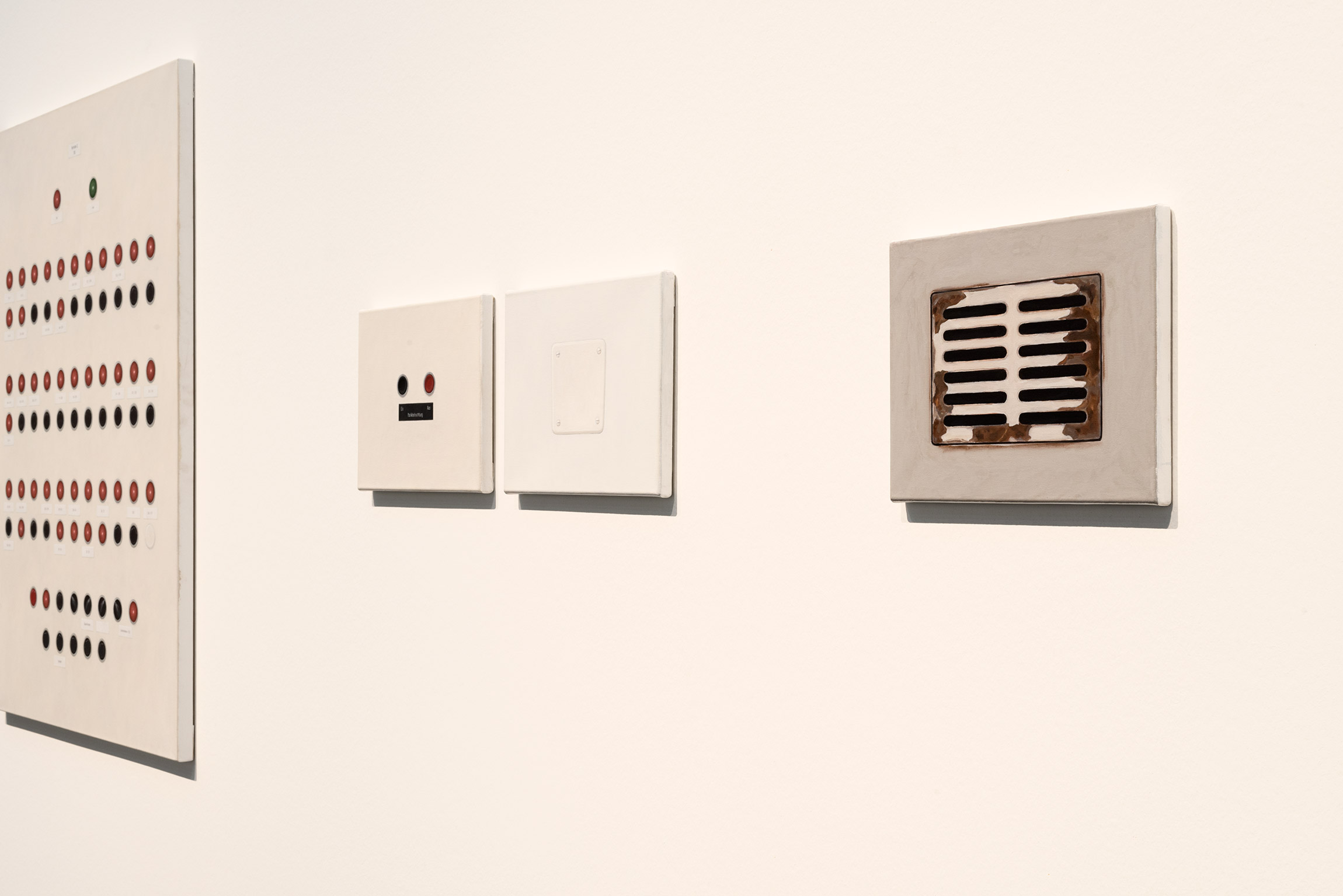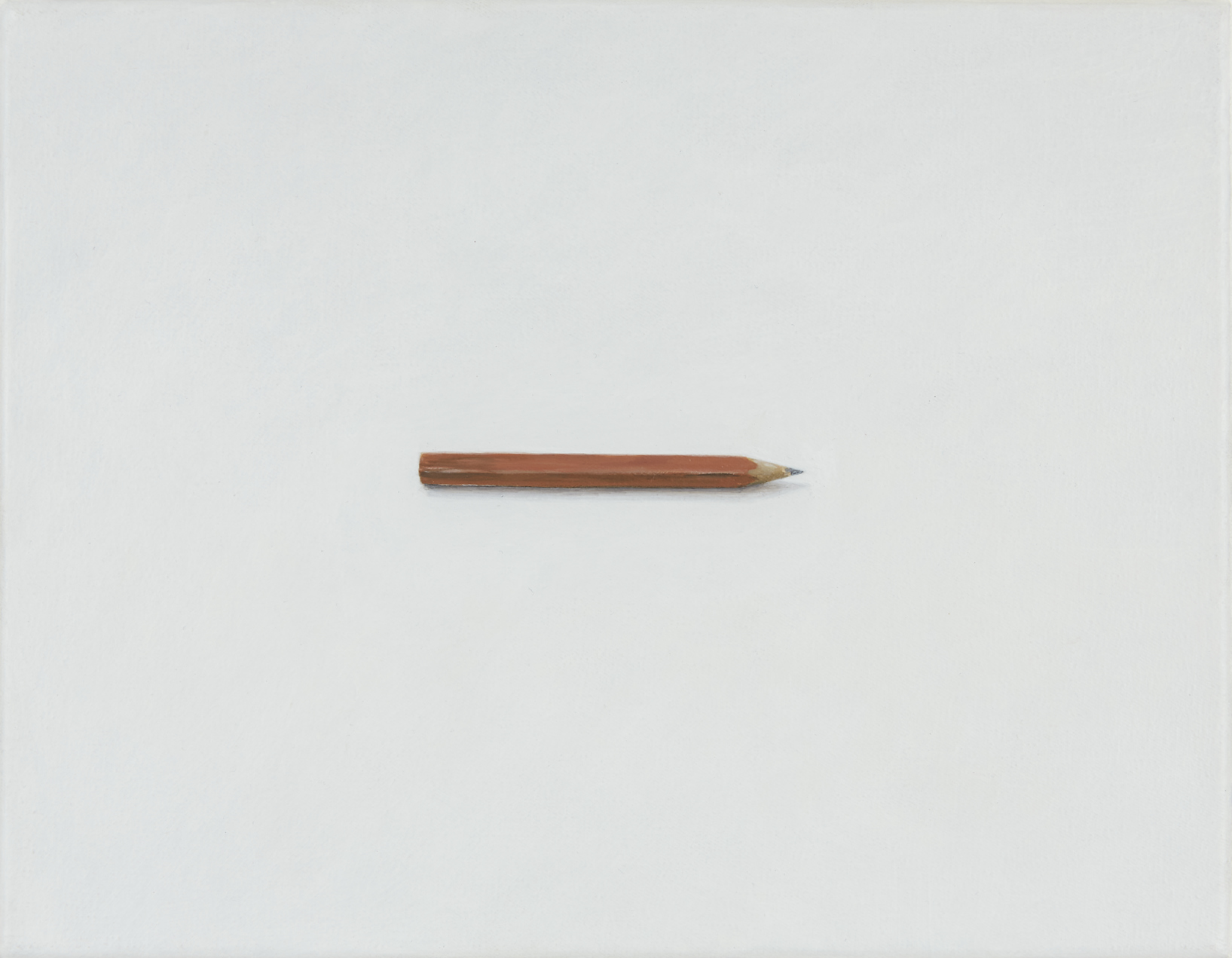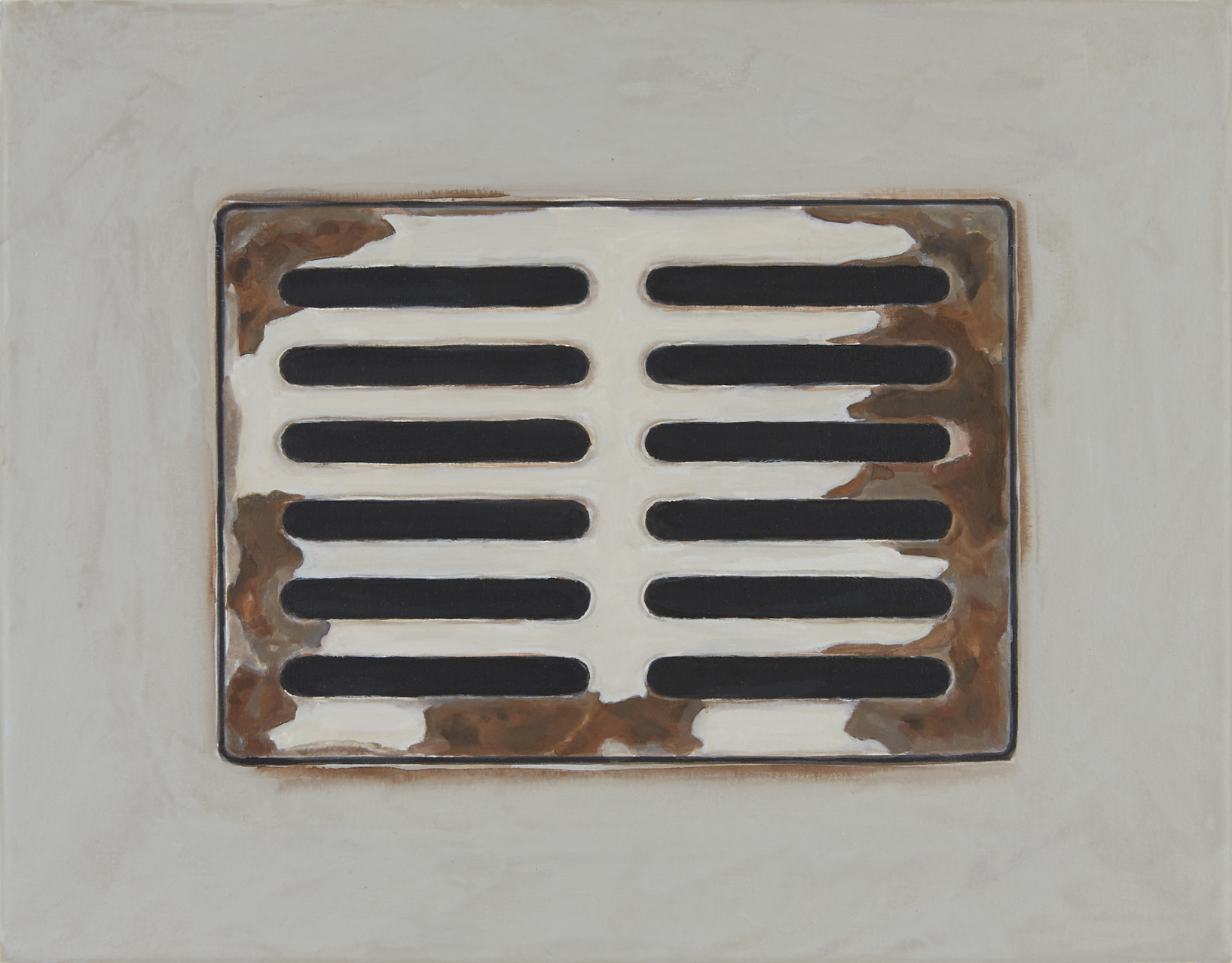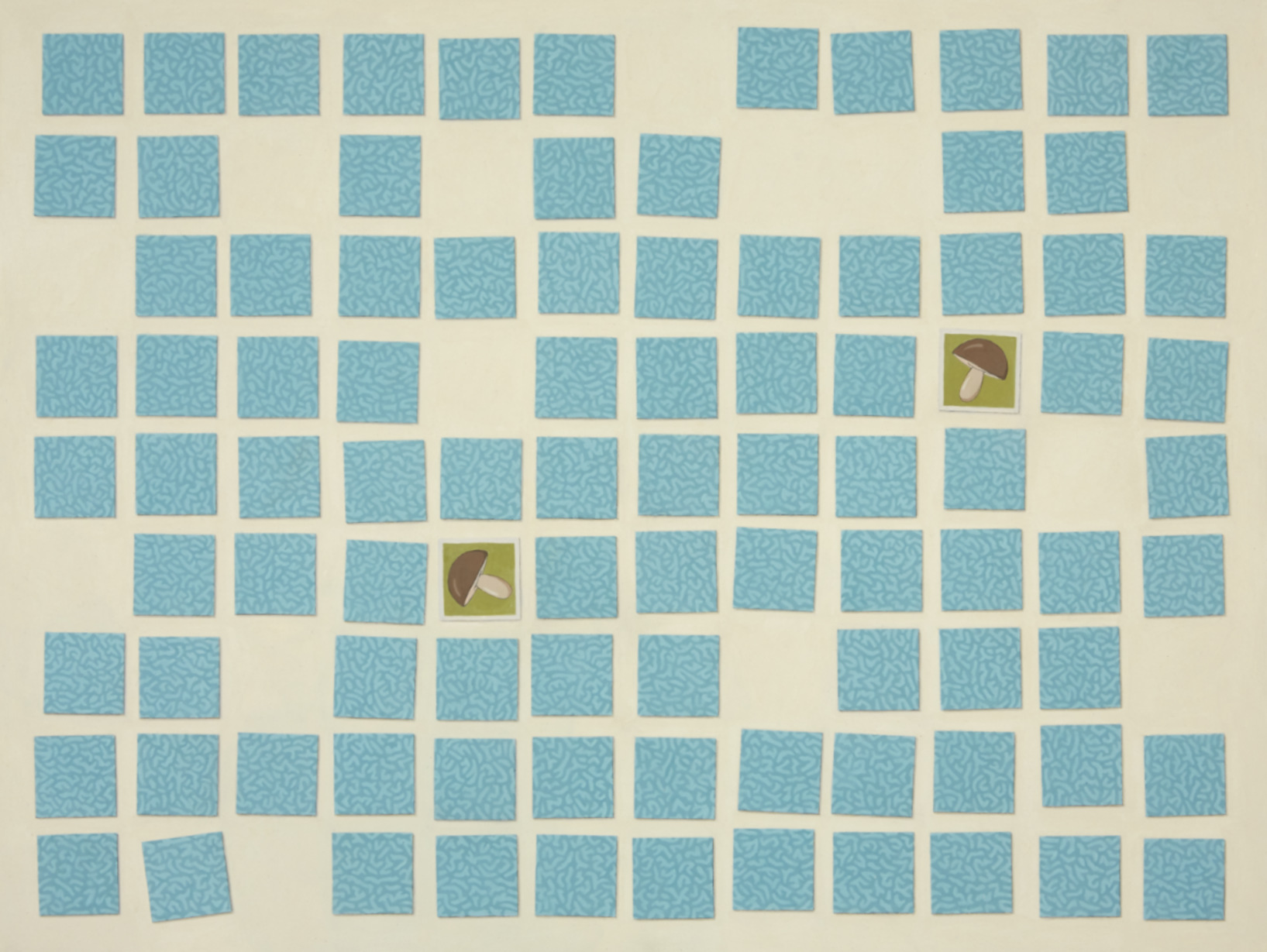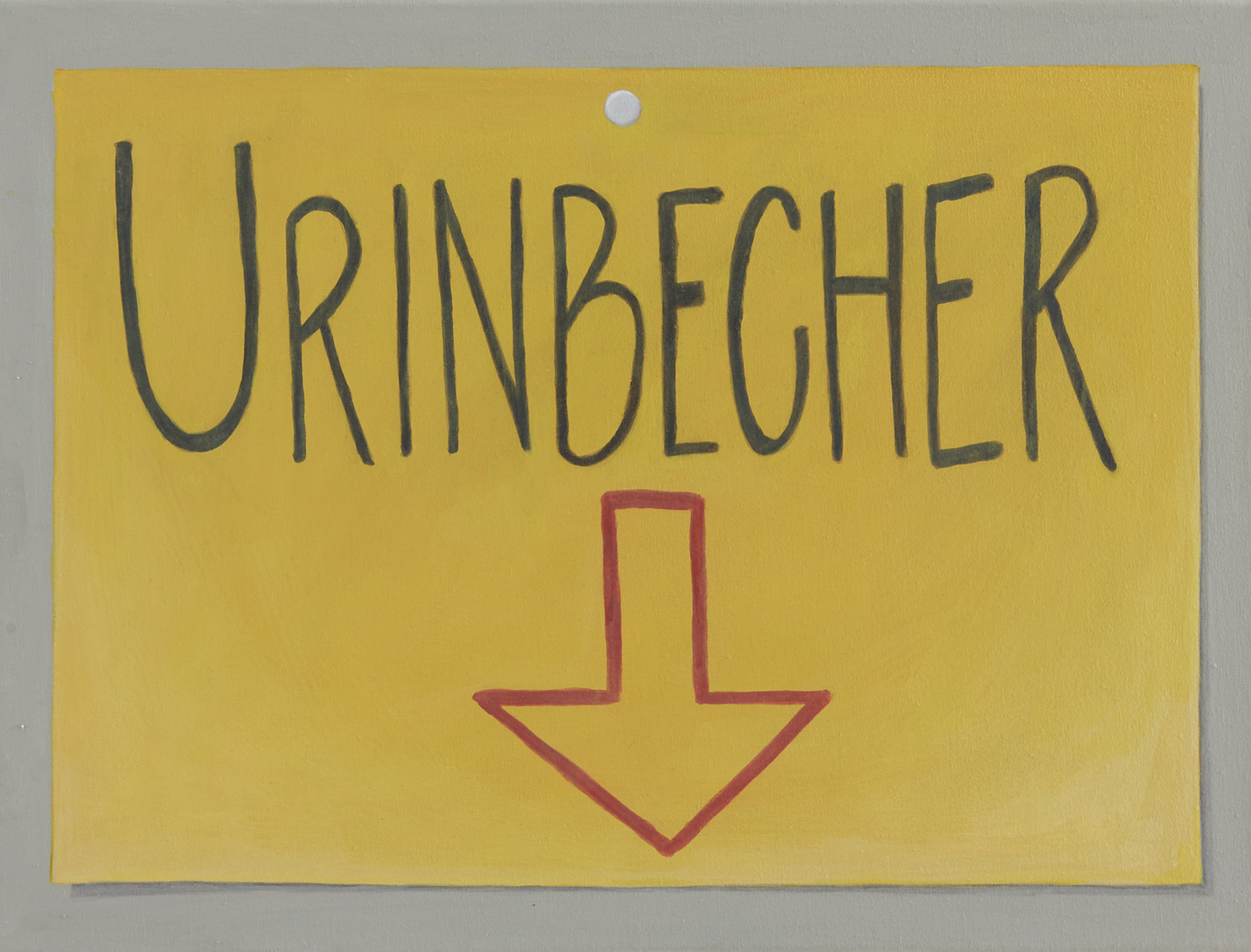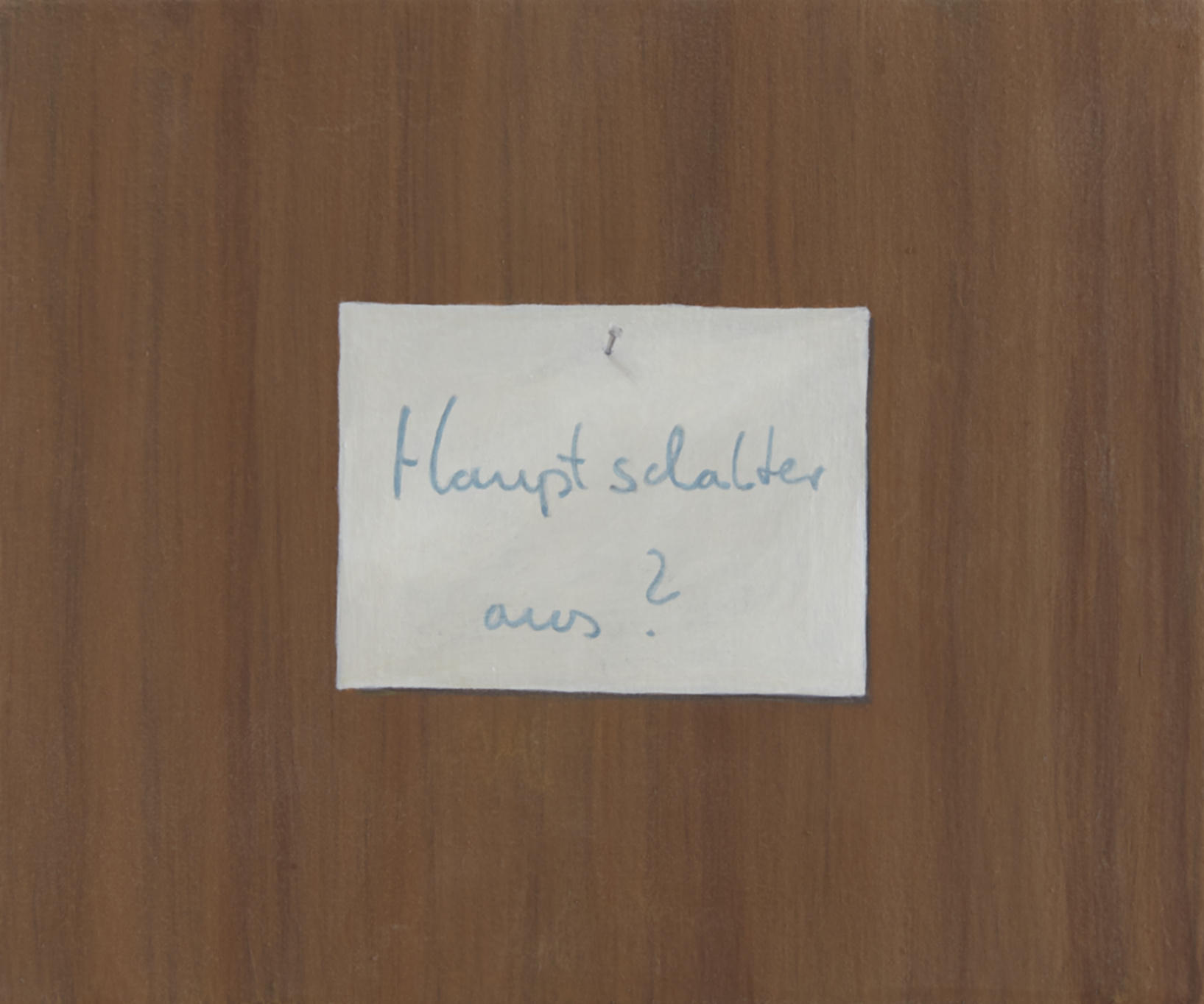Christoph Hänsli
Panikbeleuchtung
Works

Panikbeleuchtung
2019
Acrylic on canvas
25 × 32 cm

Angespitzter Bleistift
2019
Acrylic on canvas
25 × 32 cm

Abfluss
2019
Acrylic on canvas
25 × 32 cm

Verteiler 2
2019
Acrylic on canvas
115 × 92 cm

Abdeckung Zuluft
2019
Acrylic on canvas
115 × 120 cm
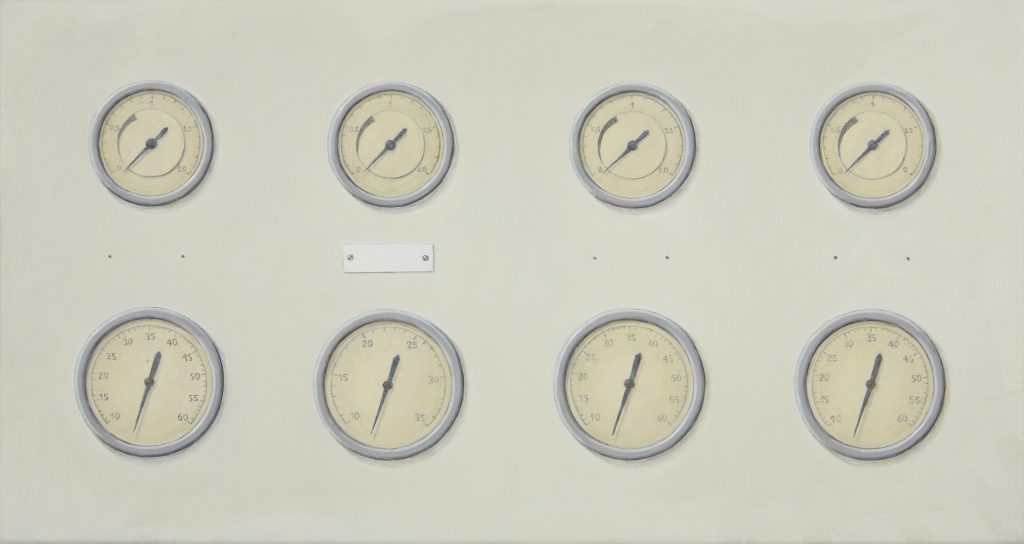
Maschinenraum
2021
Acrylic on canvas
31 × 58 cm

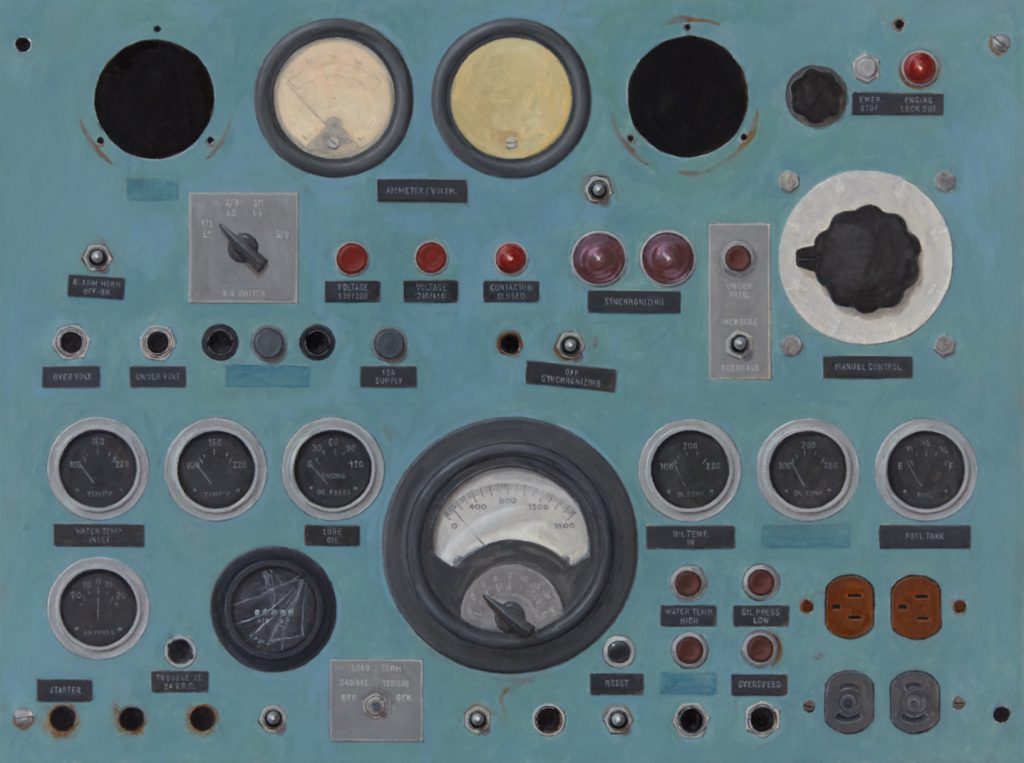
Der Synchronizer
2020
Acrylic on canvas
45.5 × 60.5 cm

Memory
2020
Acrylic on MDF
61.5 × 82 cm

Universitätsspital Zürich
2020
Acrylic on canvas
25 × 33 cm

Sonnenobservatorium Schauinsland, Schwarzwald
2020
Acrylic on canvas
16 × 19 cm

Ährensammlung, Weizen
2021
Acrylic on canvas
221.5 × 103.5 cm

Herbarium, Lauch
2021
Egg tempera and acrylic on canvas
210.5 × 103.5 cm

Gurken in Essig (series of 5 works)
2021
Egg tempera and acrylic on canvas
26 × 19 cm (each)
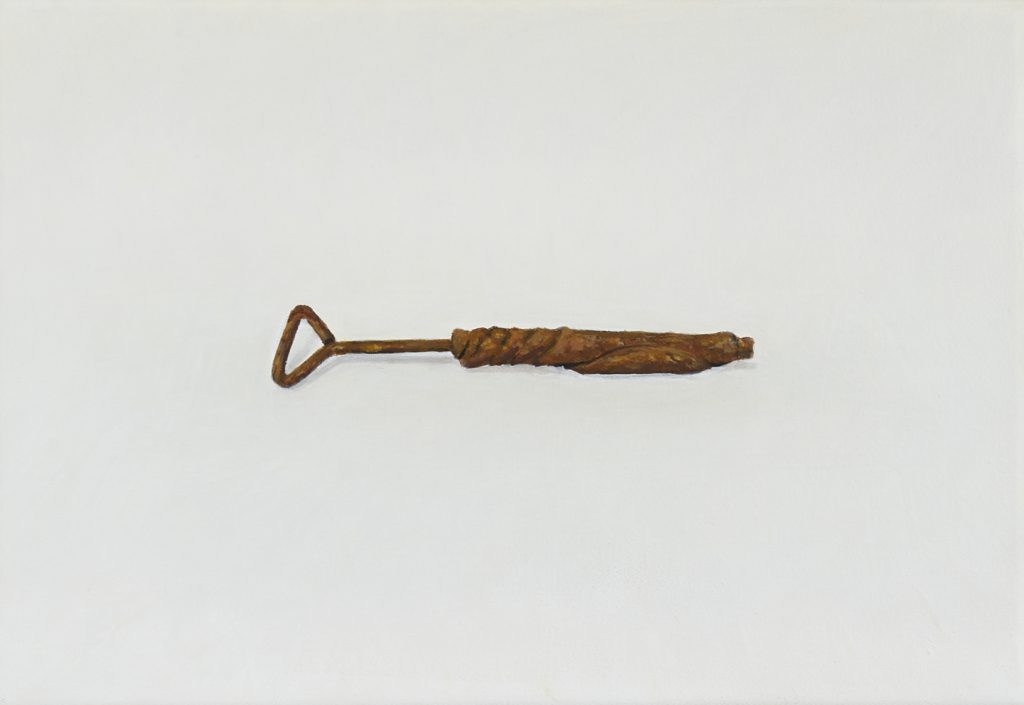
Relikt
2021
Acrylic on canvas
20 × 29 cm

In vitro-Lagerung, Minze und Kohl (series of 7 works)
2021
Oil and acrylic on canvas
32 × 25 cm (each)

Nasspräparat Rheum (Rhabarber, 1951)
2020
Egg tempera and acrylic on canvas
44.5 × 24 cm

Nasspräparat Cucurbita maxima (Riesenkürbis, 1951)
2020
Egg tempera and acrylic on canvas
41 × 23.5 cm
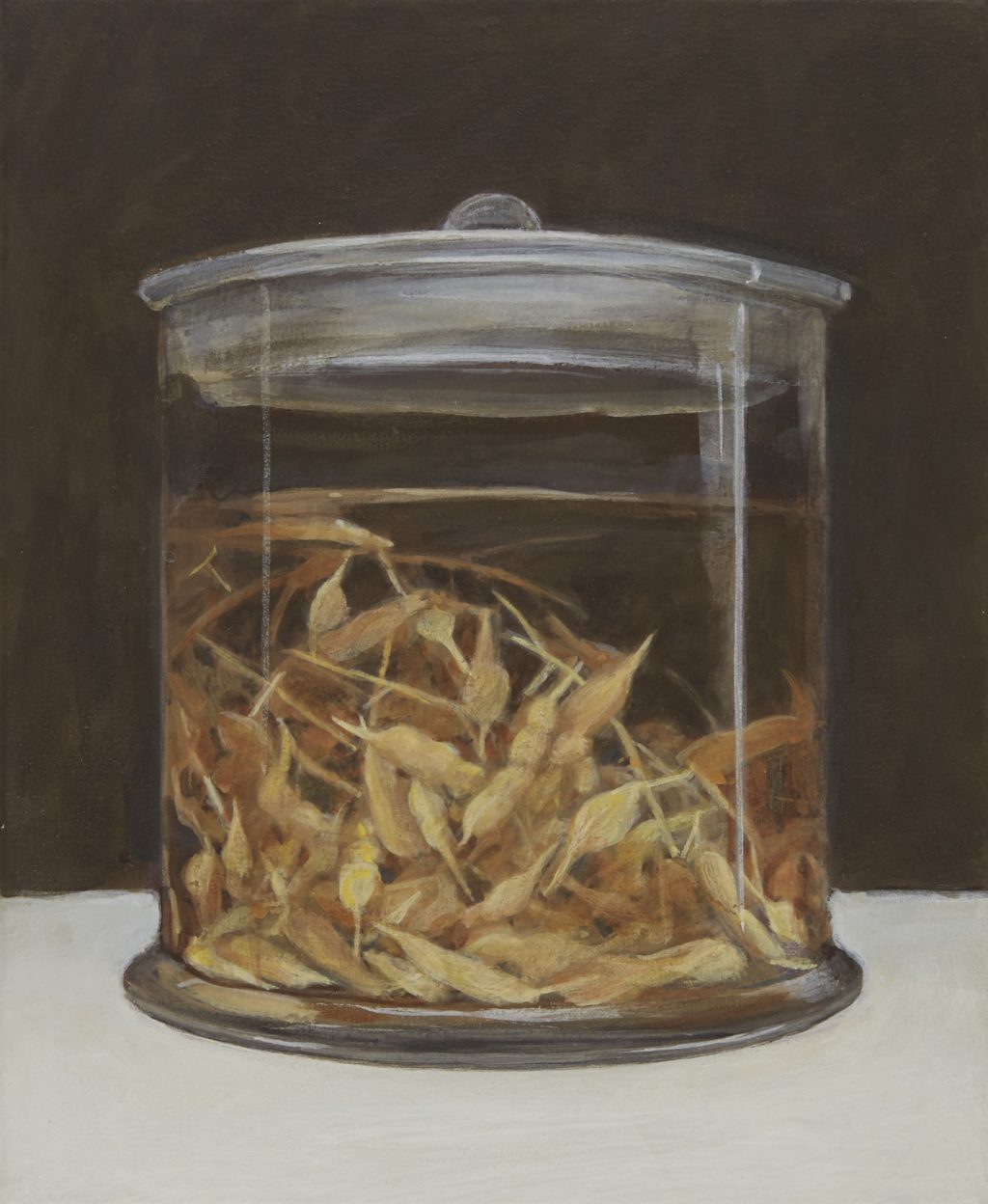
Nasspräparat Raphanus sativus (Rettich, 1982)
2020
Egg tempera and acrylic on canvas
27 × 22 cm

Nasspräparat Datura inoxia (großblütiger Stechapfel, 1973)
2020
Egg tempera and acrylic on canvas
27 × 22 cm

Nasspräparat Brassica chinensis (Pak Choi, 1962)
2020
Egg tempera and acrylic on canvas
32 × 25.5 cm

Nasspräparat Raphanus sativus (Rettich, 1980)
2020
Egg tempera and acrylic on canvas
29 × 16.5 cm
Text
“The task of art today is to bring chaos into order,” philosopher Adorno proclaimed in 1951. At first (and also at second) glance, Christoph Hänsli seems to be following this dictum less and less as his age progresses and his body of work grows. For the “ordering” (of things), along with the “preservation” (of things), and their immanent failure, are the Hänslian leitmotif, spanning his entire oeuvre. These “things” now also populate the artist’s fourth exhibition in our gallery – in the form of two very different, almost contrasting groups of works. Two German institutions served as the starting point for the creation of just over 30 paintings in the past 3 years: the Kunsthalle in Bielefeld and the Institute for Plant Genetics and Crop Plant Research in Gatersleben. Both institutions serve Hänsli’s dual interest of preservation/order, albeit in very different ways.
In the case of the Kunsthalle, “preservation” refers not to the core museum task of collection management, but to the imminent disappearance of elements of the technical system that will fall victim to the renovation of the building designed by Philip Johnson half a century ago. Control panels, levers, warning lights and measurement indicators – the aesthetics of the economic miracle years are characterized by round shapes and are, of course, hopelessly “passé” in the digital age. They are the visible traits of a technology hidden behind cover panels that serves man to control and dominate his environment, to optimize and subjugate it. These devices have been regulars in the permanent troupe of Hänsli’s oeuvre since 2011, culminating in Der Generator in 2015. The artist’s almost considerate interest in ventilation grilles and inspection flaps – whose reduction he continues to push in the Bielefeld group of works – goes back even further. The fact that Hänsli brilliantly masters the trompe l’oeil effect (which he does not seek) in terms of craftsmanship is overshadowed by the radical nature of his choice of motif. In contrast to the switches and levers, which involuntarily stimulate motor activity in the viewer, the want-to-touch reflex, these painted, “void” surfaces, despite the omnipresent promise of a “behind it,” have the opposite effect. One does not approach them, nor does one feel any impulse to open them, but almost looks through them, or into a dense fog. It is as if one does not succeed in bringing one’s eyes into focus. Hänsli describes this moment as “experiencing presence sensuously.” Faced with the geometric forms and monochrome surfaces of these paintings, one can’t but think of the milestones of abstraction and conceptual art. However, while Malevich sought to prove the superiority of “pure feeling over the representation of the visible world,” Hänsli, with his precise and at the same time reduced representationalism, is concerned with a depiction of reality, both seen and felt – without exaggeration, without dramatization, and without assigning a symbolic function to things. He penetrates into the “no man’s land between man and object” (to quote Adorno once again), in which the everydayness appears strange to us and a supposedly familiar and controlled order is suddenly called into question. Having reached this point – with his confidence in everyday technology tarnished – the viewer gratefully reaches for a painterly life ring that Hänsli throws to him: on the monochrome gray-beige tin flap, which can only be recognized as such at through discrete contour shadows, we discover the traces left behind by dirty hands opening and closing it (Abdeckung Zuluft [Supply Air Cover]). Now we feel the urge to step closer to the painting, just to realize with relief that it is indeed the flap that has been sullied – and not the work of art itself.
Continue reading
Entering the second exhibition hall, the perceived temperature of the room rises. In the Gatersleben paintings, Hänsli shifts from the obscuring geometry and pale monochromy of technology to the warm colorfulness of plants and the transparency of scientific glass containers. The institute is dedicated to the study and reproduction of plants, with a focus on crop plants. For these cultivated plants, the Gatersleben gene bank serves as a kind of backup – certainly an imperative of the times in light of rapid climate change and the extinction of species. In this state-of-the-art research facility, Hänsli has chosen objects that seem to date from a time before the proclamation of the Anthropocene – the age when humans became the determining influence on all biological and atmospheric processes. In the botanical reference collection he found a spike collection, an extensive herbarium, fluid-preserved specimens. The painterly translation of these ordering structures of stacked herbarium sheets with dried plant parts (a highlight of the exhibition is the man-sized painting Herbarium, Lauch [Leek]), specimen jars lined up, labeling and numbering – for Hänsli this all is a “visualization of objectified order,” exemplified even further by artistic repetition. Now, historia naturalis is not exactly a new theme in art. Over the centuries, artists have repeatedly translated their fascination with encyclopedic and taxonomic collecting and ordering into paintings. In doing so, they have demonstrated the closeness of art and science, since both require a certain degree of obsessiveness to produce satisfactory results – undeniably also a trait of the painter Hänsli. In the 21st century, however, nature serving as a projection surface for desires has had its day, and Hänsli is, of course, fully aware of this. Seventy years ago, when the leaves and stems for his wet specimen Nasspräparat Rheum (Rhabarber, 1951) (Rhubarb) were dipped into ethanol, the term “ecosystem” was still understood to mean “natural systems interfered with by humans.” Present-day Gatersleben reflects a human system, with embedded ecosystems. Its collection of wet specimens and dried plants dawns toward disposal just as the switches and warning lights in the basement of Kunsthalle Bielefeld do. What started with Deponie (Disposal Site, 2015/16), a series of colorfully portrayed, highly toxic waste materials in canning jars, Hänsli now intensifies in this exhibition, appropriately titled Panikbeleuchtung (Panic Lighting) – namely the subtle extension of his motivic canon of “order” and “preservation” to include “warning.” This, finally, brings us back to Adorno’s postulation: the required chaos has nothing to do with disorder, but with artists’ duty of being troublemakers. At first and second glance, Hänsli and his paintings form the quietest and most peaceable proposition imaginable in the today’s art scene. Only at the third do we learn otherwise.
The exhibition ends on a tongue-in-cheek note: with the series Gurken in Essig (Pickled Cucumbers), everyone can bring a storable wet specimen into their home, unencumbered for the time being by questions about the future of this planet.


